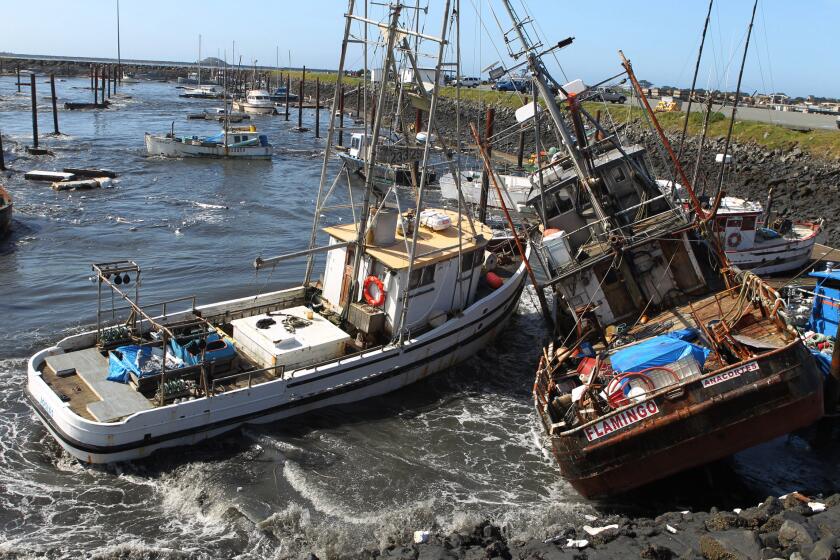EARTHQUAKE TERMS
- Share via
Here are some terms commonly associated with earthquakes:
Epicenter--The surface point directly above the point in the earth’s crust where a rupture begins. The epicenter is determined by a network of seismic stations linked by telephone hookups to monitoring centers, such as those at Cal Tech in Pasadena and USC in Los Angeles.
Intensity--A subjective measure based on the effects of the quake on the surface of the earth and man-made structures. The intensity of a quake will vary with the type of soil. Generally, the harder the soil in an area the milder the intensity of a quake.
Magnitude--The maximum motions of a quake recorded by a seismograph, the Richter scale being the most common measure.
Liquefaction--A process where water-saturated sediment temporarily loses strength, usually because of shaking, and behaves like a liquid. The soil in the South Bay is mostly sediment and the water table has been rising in recent years--due to lack of consumption and high rainfall--making liquefaction an increasing danger.
Strike-slip fault--When the moving side of a fault slides horizontally, generally to the north or northwest. Most of the faults in the South Bay are of this type.
Dip-slip--When one side of a fault is moving vertically compared to the other. There are two types of dip-slip faults: normal, where the lower mass is moving up, and reverse or thrust, where the upper side is moving higher.
More to Read
Sign up for Essential California
The most important California stories and recommendations in your inbox every morning.
You may occasionally receive promotional content from the Los Angeles Times.













